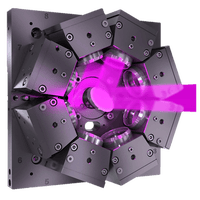Does excitation light source matter for HCS?
Lasers and LEDs both produce light and are modern components used in many microscopes and high-content screening devices.
Both excitation light sources are available in high power versions and some LEDs are even brighter than corresponding lasers.
So, is there even a difference?
| LED |
Laser |
| Bright light source |
Bright light source |
| Many wavelengths available |
Collimated light essential for Microlens-enhanced spinning disk |
| Lower total cost of ownership |
Higher total cost of ownership |
| Extended lifetime |
Long lifetime but shorter than LED |
Lasers have a very narrow excitation band compared to LEDs. However, this hardly has any noticeable impact in biological applications, since the absorption spectra of fluorophores are quite broad and hence do not benefit from a narrow band illumination.
The collimated excitation light produced by lasers is critical for certain optical configurations like microlens-enhanced spinning disk systems. In such systems, the amount of light passing through a pinhole disk is increased by using an additional disk with micro lenses. When illuminated with collimated light, each microlens focusses the light on its matching pinhole, improving the performance of the confocal system. If a device does not contain microlenses matched to the individual pinholes, it does not matter whether it uses lasers or LEDs as the excitation source.
For research use only. Not for use in diagnostic procedures.






























